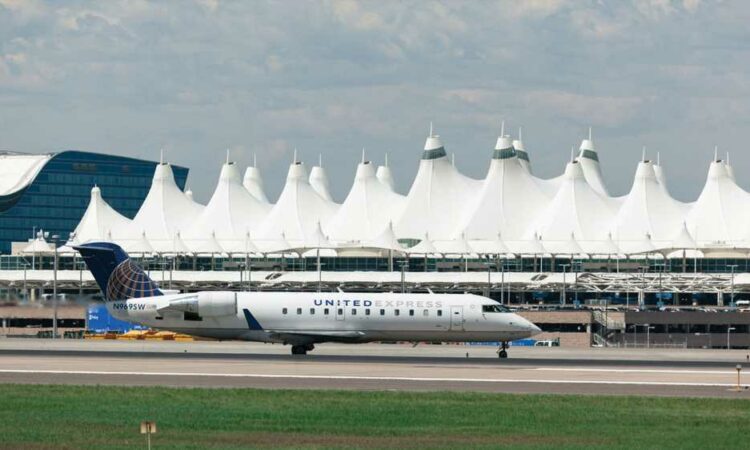United’s late June announcement that it will pare down its fleet of 50-seat aircraft by approximately 200 by 2026 continues a long-term trend by U.S. airlines away from 50-seat service.
But how will small cities be impacted as airlines increasingly upgauge their smaller, regional jets for 76-seat aircraft?
The answer, said Faye Malarkey Black, CEO of the Regional Airline Association (RAA), will depend upon the city.
“When upgauging happens because of market characteristics and demand, that is a good thing,” Black said.
But she added that some communities are best served by smaller jets. So if airlines move to large planes for secondary reasons, including to drive down costs or to stay compliant with union contract clauses — known as scope clauses — that cap regional aircraft fleet sizes, the results are often problematic. Negative outcomes for small markets include losing frequencies, routes or, in the worst cases, air service entirely.
According to data compiled by the RAA, between 2008 and 2020 the number of 50-seat Bombardier CRJ-200 aircraft flown by U.S. carriers declined by more than 60%, as airlines increased their flying in dual-class 70- to 76-seat regional planes. The number of Embraer ERJ 135, 140 and 145 jets, which hold between 37 and 50 seats, declined by 40%.
Those trend lines will continue as United parts with two-thirds of its remaining single-class, 50-seat planes (the carrier also has 48 50-seat CRJ-550s, which include a first-class cabin) and Delta prepares to phase out all 50-seat operations by eliminating its 51 CRJ-200s by the end of 2023.
American is also reducing its 50-seat flying, though it hasn’t been specific with its plans. This spring, American got rid of the last of its Embraer E140s.
As United announced its small-plane drawdown last month, chief commercial officer Andrew Nocella asserted that the carrier does not intend to reduce service in small communities.
Instead, he said, many communities with 50-seat service will get 76-seat service. And many routes currently served by 76-seat regional jets will be served by 130-seat mainline jets.
United intends to keep 100 single-class 50-seat jets to serve routes that don’t have the demand for 76-seat flights, Nocella said, adding that such routes are particularly common from the carrier’s hub in Denver, from where it flies to many small Mountain West towns.
For United and the other network carriers, upgauging to 70- to 76-seat planes drives down marginal costs. For example, two pilots are required whether a plane seats 50 or 76 passengers. Larger regional jets also offer a more comfortable passenger experience, while their first-class cabins cater to the key business market.
One small airport that will welcome Delta’s elimination of 50-seat flying is Brunswick Golden Isles in Georgia, which serves upscale coastal communities including St. Simons, Sea Island and Jekyll Island.
The airport’s lone route, to Atlanta, is currently flown three-times daily on 50-seat, Delta Connection-marketed aircraft.
Robert Burr, executive director for Brunswick’s Glynn Country Airport Commission, said he doesn’t expect a reduction in frequency once Delta upgauges to two-class regional jets on the route.
“Large aircraft not only offer first-class service — different levels of service available for our customers who want it — but also have more baggage availability, which has been a problem in the past,” Burr said.
But while Burr feels confident about Brunswick, not all small communities will be so lucky.
“Generally, the industry seems to be heading toward network architecture with a similar number of pre-Covid dots on the map; however, the dots will be served with less frequency than before the pandemic,” said William Swelbar, chief analyst at the industry consultancy Swelbar-Zhong.
He said that there are exactly 100 continental U.S. airports that rely primarily on 44-seat to 50-seat regional jet service and are located within 180 miles of at least one substantially larger airport.
“This trend toward larger aircraft promises a structural rethink regarding how to serve smaller markets,” Swelbar said. “Or, how to serve some markets and not all, yet still attract the same levels of traffic and revenue via the highway.”
One possibility, he noted, is that regional airlines could fill in gaps being left by the large carriers by flying standalone operations. But he also said that rising wages and fuel costs make the economics of such operations difficult.
Still, neither Swelbar nor the RAA’s Black think 50-seat commercial aircraft will completely disappear in the U.S.
“I just don’t think they are ever going to be fully phased out, because there is a use for them,” Black said.
“Anyone who permanently parks 50-seat planes is going to lose market presence. And I believe it is going to stabilize. Nature abhors a vacuum.”
Source: Read Full Article
